Mountaintop Removal Mining
1980s
In 1986 WVHC successfully organized local opposition to the expansion of a 2,000 acre acid producing strip mine in Upshur County in central WV. The expansion would have included a 1-mile long valley fill in the headwaters of a native brook trout stream and a 90 foot high dam across a farm field in the watershed below. A settlement agreement in a separate 1988 litigation against the state of WV resulted in significant, though short-lived, improvements in reclamation and the stability of fills at huge strip mines.
1990s
In the early 1990’s requirements of the Clean Air Act as well as costly water treatment liabilities in the northern, higher sulfur, acid prone coalfields of WV, caused mining to shift to the southern coalfields. At the same time, tax credits enabled industry to invest in new technology and bigger machinery. Other financial incentives encouraged mining the thinner seams of coal that are layered in the southern mountains and are more difficult to mine. Mountaintop removal expanded beyond all expectations. During the ‘90’s WVHC played a key role in laying the groundwork for the growing opposition to mountaintop removal mining and in convincing regulatory agencies of the significance and overall impact of the ever-increasing number and size of fills being permitted. WVHC members participated in and reported on state sponsored mine tours, were appointed to legislative committees established to review state policies of mitigating for streams buried under valley fills, and wrote articles describing the practice and the convoluted permitting process. Members also participated in many public and media forums and debates with government and industry representatives. Appointed to the governor’s task force on mountaintop removal mining in 1998, WVHC offered a minority report that pointed to the illegality of filling streams and to the environmental and economic harm caused by mountaintop removal mining. In 1997 we compiled the first map visually documenting the extent of stream loss from mountaintop removal and valley fills in the three county area of Boone, Logan and Mingo in southern West Virginia.
A major and only organizational plaintiff in the 1998 Bragg v Robertson litigation, WVHC was instrumental in convincing EPA to conduct the first ever Environmental Impact Study (EIS) on the effects of mountaintop removal mining and valley fills with the intent of finding ways to reduce the impact of those activities. Although the politically tainted recommendations of the final 2005 EIS called instead for streamlining the permitting process, the scientific studies contained in the report have been invaluable as some of the first official documentation of the deleterious impacts of mountaintp removal mining and valley fills. Few permits were issued while the EIS was being prepared.
2000s
The Conservancy continues its vigorous opposition to this environmentally destructive method of mining by engaging with others in litigation, education, actions, publicity and research. WVHC joined OVEC, CRMW and the Appalachian Center (now aka Appalachian Mountain Advocates) in comments objecting to over 40 inadequate industry applications to the Army Corps of Engineers for 404 fill permits and is currently a co-plaintiff in legal action opposing the Corps’ illegal permitting of large-scale mines without the required scientific study and review. We are also working with groups to oppose weakening amendments to environmental law, and are supporting local and regional community efforts to inform the nation and world of the travesty of justice called mountaintop removal.
2010s
Delays were many; efforts to tighten permits and strengthen regulations were partially successful; but denials were few and the practice of Mountaintop Removal, though somewhat reduced, has continued and other large scale mining is being permitted. Ongoing health impacts to nearby communities remain unaddressed and are for the most part ignored.
A major feature and legacy of this mining has been degradation of hundreds of streams by selenium pollution and ionic stress that degrade the water quality and harm aquatic life in once healthy thriving headwater streams. Our legal efforts since 2010 have focused on these water issues. Represented by Appalachian Mountain Advocates, the Conservancy and our co-Plaintiffs have won court decisions that hold mining companies responsible for expensive and extensive treatment of many of these polluting discharges and for making additional payments to independent land protection organizations boosting their efforts to preserve and protect properties especially in watersheds harmed by MTR where possible.
Links
Appalachian Mountain Advocates
Ohio Valley Enviromental Coalition
Coal River Mountain Watch
Southern Appalachian Mountain Stewards
West Virginia Land Trust
Blogs
Coal Tattoo
Recommended Reading
Moving Mountains: How One Woman and Her Community Won Justice from Big Coal
by Penny Loeb
The Clash over Coal in the Mountain State
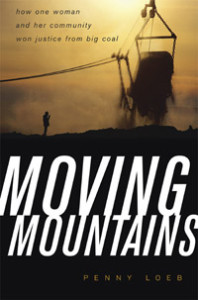 Lexington, KY—A hotbed of contemporary criticism and conflict, mountaintop removal is both praised by coal companies as the most effective mining technique and lambasted by environmentalists for the irreversible destruction it wreaks upon the land. The process involves the use of explosives and heavy machinery to slice off several hundred feet from the tops of mountains in order to expose the rich seams of coal that lie beneath. Just as significant as the harm done to the land, however, is the effect on the surrounding communities when the promise of profits leads big coal companies to increasingly disregard the neighborhoods affected by their mining techniques.
Lexington, KY—A hotbed of contemporary criticism and conflict, mountaintop removal is both praised by coal companies as the most effective mining technique and lambasted by environmentalists for the irreversible destruction it wreaks upon the land. The process involves the use of explosives and heavy machinery to slice off several hundred feet from the tops of mountains in order to expose the rich seams of coal that lie beneath. Just as significant as the harm done to the land, however, is the effect on the surrounding communities when the promise of profits leads big coal companies to increasingly disregard the neighborhoods affected by their mining techniques.
Author Penny Loeb first became interested in the mountaintop removal conflict in 1997, when she authored an award-winning article on the matter for U.S. News and World Report. In Moving Mountains: How One Woman and Her Community Won Justice from Big Coal, she recounts the story of Patricia Bragg, a Pie, West Virginia, native whose community was upended when coal companies chiseled into the nearby mountains in 1994. After longwall machines used in deep mining sapped her neighbors’ wells, Bragg rallied her community to demand rights for the neighborhoods devastated by the mining. With Bragg at the helm, eighty-eight homeowners sued the U.S. Army Corps of Engineers for their failure to comply with the Surface Mining Control and Reclamation Act. Lead by lawyer Joe Lovett, their dispute culminated in Bragg v. Robertson, a historic case that temporarily halted mountaintop dumping in the nearby valleys and forced the implementation of proper resurfacing techniques.
Though Loeb heralds the victory of the Pie community, Moving Mountains is not strictly an antimountaintop removal treatise. Loeb approaches the controversial issue from all angles, including perspectives from the miners, citizens, politicians, and coal companies involved. She offers detailed profiles of how Bragg v. Robertson affected individuals such as Lovett, miner Bob Schultz, African- American legislator Arley Johnson, and housewife Vicky Moore. Loeb notes that the efforts of Bragg are part of a wider movement taking place over the past fifty years as activism in Appalachia has broadened from isolated debates over individual issues into widespread community action and empowerment. Education and legislation on mountaintop removal and other harmful mining practices are beginning to bring miners and citizens together in order to determine the best solutions for all involved. Moving Mountains documents a bold step taken towards seeking a common solution that will benefit both the environment and regional economies sustained through coal mining.
Penny Loeb, a freelance writer who lives outside of Washington D.C., is a former senior editor at U.S. News and World Report and a former investigative reporter for Newsday. She has received numerous awards for journalism and was a finalist for the Pulitzer Prize in 1988.
July 27, 2008
Book on mountaintop removal wins award
CHARLESTON, W.Va. — ForeWord Magazine, which promotes books released by university and independent publishers, gave a Bronze Award in its 2007 environmental category to Penny Loeb’s “Moving Mountains” about mountaintop removal coal mining in West Virginia
.
“Moving Mountains” focused on Patricia Bragg, a Boone County woman from the town of Pie, who fought against the huge mountaintop removal mines in her area.
Bragg soon became involved in a broad lawsuit against the U.S. Army Corps of Engineers, called Bragg v. Robertson, which temporarily halted mountaintop removal after a ruling by the late U.S. District Judge Charles Haden II.
Loeb, who lives with her husband in Loudoun County, Va., was previously a senior editor at “U.S. News & World Report” and investigative reporter for “Newsday.”
The University Press of Kentucky in Louisville published “Moving Mountains.”
Big Coal: The Dirty Secret Behind America’s Energy Future
By Jeff Goodell
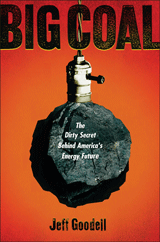 Long dismissed as a relic of a bygone era, coal is back — with a vengence. Coal is one of the nation’s biggest and most influential industries — Big Coal provides more than half the electricity consumed by Americans today — and its dominance is growing, driven by rising oil prices and calls for energy independence. Is coal the solution to America’s energy problems?
Long dismissed as a relic of a bygone era, coal is back — with a vengence. Coal is one of the nation’s biggest and most influential industries — Big Coal provides more than half the electricity consumed by Americans today — and its dominance is growing, driven by rising oil prices and calls for energy independence. Is coal the solution to America’s energy problems?
On close examination, the glowing promise of coal quickly turns to ash. Coal mining remains a deadly and environmentally destructive industry. Nearly forty percent of the carbon dioxide released into the atmosphere each year comes from coal-fired power plants. In the last two decades, air pollution from coal plants has killed more than half a million Americans. In this eye-opening call to action, Goodell explains the costs and consequences of America’s addiction to coal and discusses how we can kick the habit.
Lost Mountain: A Year in the Vanishing Wilderness
By Erik Reece
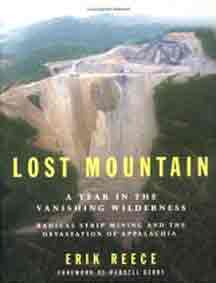 A new form of strip mining has caused a state of emergency for the Appalachian wilderness and the communities that depend on it-a crisis compounded by issues of government neglect, corporate hubris, and class conflict. In this powerful call to arms, Erik Reece chronicles the year he spent witnessing the systematic decimation of a single mountain and offers a landmark defense of a national treasure threatened with extinction.
A new form of strip mining has caused a state of emergency for the Appalachian wilderness and the communities that depend on it-a crisis compounded by issues of government neglect, corporate hubris, and class conflict. In this powerful call to arms, Erik Reece chronicles the year he spent witnessing the systematic decimation of a single mountain and offers a landmark defense of a national treasure threatened with extinction.
Read an interview with Erik Reece here.
Bringing Down the Mountains:
The Impact of Mountaintop Removal on Southern West Virginia Communities
By Shirley Stewart Burns
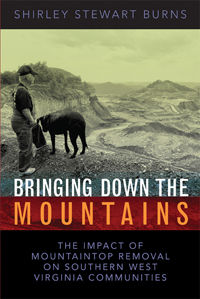 “Bringing Down the Mountains not only tells the story of coalfield residents’ fight against mountaintop removal, but it puts this tale into the important historical context of the continuing fight between West Virginians and outside coal interests over the use—and sometimes abuse—of the state’s natural resources. Shirley Stewart Burns reminds readers that West Virginia’s history is a long series of fights over who benefits and who is damaged by coal extraction, how the riches created by the coal-based economy are divided, and who decides the outcome these vital issues.” — Ken Ward Jr., The Charleston Gazette
“Bringing Down the Mountains not only tells the story of coalfield residents’ fight against mountaintop removal, but it puts this tale into the important historical context of the continuing fight between West Virginians and outside coal interests over the use—and sometimes abuse—of the state’s natural resources. Shirley Stewart Burns reminds readers that West Virginia’s history is a long series of fights over who benefits and who is damaged by coal extraction, how the riches created by the coal-based economy are divided, and who decides the outcome these vital issues.” — Ken Ward Jr., The Charleston Gazette
Miners, Millhands, and Mountaineers: Industrialization of the Appalachian South, 1880-1930
By Ronald D. Eller
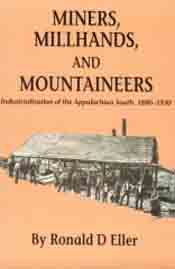 “As a benchmark book should, this one will stimulatethe imagination and industry of future researchers as well as wrapping up the results of the last two decades of research. . . . Eller’s greatest achievement results from his successful fusion of scholarly virtues with literary ones. The book is comprehensive, but not overlong. It is readable but not superficial. The reader who reads only one book in a lifetime on Appalachia cannot do better than to choose this one. . . . No one will be able to ignore it except those who refuse to confront the uncomfortable truths about American society and culture that Appalachia’s history conveys.”
“As a benchmark book should, this one will stimulatethe imagination and industry of future researchers as well as wrapping up the results of the last two decades of research. . . . Eller’s greatest achievement results from his successful fusion of scholarly virtues with literary ones. The book is comprehensive, but not overlong. It is readable but not superficial. The reader who reads only one book in a lifetime on Appalachia cannot do better than to choose this one. . . . No one will be able to ignore it except those who refuse to confront the uncomfortable truths about American society and culture that Appalachia’s history conveys.”
— John A. Williams, Appalachian Journal.
Transforming the Appalachian Countryside
Railroads, Deforestation, and Social Change in West Virginia, 1880-1920
By Ronald L. Lewis
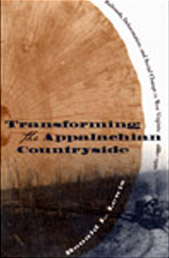 “An important contribution to the growing body of scholarly writing that has been revising the idea of Appalachian exceptionalism for the past decade. . . . Will help banish forever the persistent social construct of a people and region somehow set apart from the major developmental currents of late-nineteenth- and early-twentieth-century industrial capitalism. . . . Meticulously researched, well written, and enhanced by dozens of poignant photographs. It is a welcome addition to the growing body of literature on the dynamism of a rural-industrial society historically dismissed as static.” — Journal of Southern History
“An important contribution to the growing body of scholarly writing that has been revising the idea of Appalachian exceptionalism for the past decade. . . . Will help banish forever the persistent social construct of a people and region somehow set apart from the major developmental currents of late-nineteenth- and early-twentieth-century industrial capitalism. . . . Meticulously researched, well written, and enhanced by dozens of poignant photographs. It is a welcome addition to the growing body of literature on the dynamism of a rural-industrial society historically dismissed as static.” — Journal of Southern History
Coal River
By Michael Shnayerson
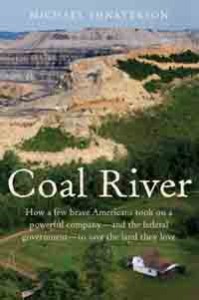 One of America’s most dramatic environmental battles is unfolding in southern West Virginia. Coal companies are blasting the mountains, decapitating them for coal. The forested ridge tops and valley streams of Appalachia — one of the country’s natural treasures — are being destroyed, along with towns and communities. An entire culture is disappearing, and to this day, most Americans have no idea it’s happening.
One of America’s most dramatic environmental battles is unfolding in southern West Virginia. Coal companies are blasting the mountains, decapitating them for coal. The forested ridge tops and valley streams of Appalachia — one of the country’s natural treasures — are being destroyed, along with towns and communities. An entire culture is disappearing, and to this day, most Americans have no idea it’s happening.
Michael Shnayerson first traveled to the coal fields four years ago, on assignment for Vanity Fair. There he met an inspiring young lawyer named Joe Lovett, who was fighting mountaintop removal in court with a series of brilliant and daring lawsuits. He also met Judy Bonds, whose grassroots group, the Coal River Mountain Watch, was speaking out in a region where talking truth to power was both brave and dangerous. The two had joined forces to take on Massey Energy, the largest and most aggressive of the coal companies, and its swaggering, notorious chairman, Don Blankenship.
Strange as This Weather Has Been
by Ann Pancake
 Set in present day West Virginia, Ann Pancake’s debut novel, Strange As This Weather Has Been, tells the story of a coal mining family—a couple and their four children—living through the latest mining boom and dealing with the mountaintop removal and strip mining that is ruining what is left of their mountain life. As the mine turns the mountains to slag and wastewater, workers struggle with layoffs and children find adventure in the blasted moonscape craters.
Set in present day West Virginia, Ann Pancake’s debut novel, Strange As This Weather Has Been, tells the story of a coal mining family—a couple and their four children—living through the latest mining boom and dealing with the mountaintop removal and strip mining that is ruining what is left of their mountain life. As the mine turns the mountains to slag and wastewater, workers struggle with layoffs and children find adventure in the blasted moonscape craters.
Longwall Mining
Longwall mining is a form of underground coal mining that allows industry to mine massive blocks of coal more efficiently and with fewer miners than previous mining methods. Once done with pick and shovel and mules, underground coal mining progressed to using machines that could extract more coal at a faster rate of production. Until the past 50 years or so much of that conventional mining left large pillars of coal in the ground to support the surface and protect homes above. Subsidence was always a possibility as the remaining pillars of coal would deteriorate, but it was often delayed for decades if it happened at all.
In a quest to extract a greater percentage of the underground coal, companies began shaving off and even taking out the supporting pillars as the miners ‘retreated’ to the surface. Over the years, technology advanced to the point where today companies that can afford the initial investment in equipment are able to extract entire blocks of coal 1,000 – 1,500 feet wide and a mile or two long. Removing such large blocks of coal 5or 6 feet high with no support left to hold up the surface results in what the industry refers to as “planned subsidence”.
Promoted as a more predictable, more controlled, and more quickly finished type of subsidence the actual experience is often far more severe and the subsided ground continues to move and settle for months if not years. Homes and outbuildings on the edge of the longwall panel suffer the most damage, but structures in the middle of the panel will drop several feet and foundations and chimneys are permanently damaged. Streams and wells are often lost or depleted; springs may disappear from one property and reappear elsewhere or not at all.
Longwall mining is done throughout state of West Virginia and accounts for a large percentage of the coal produced in the state in any given year.
According to the Office of Surface Mining Reclamation and Enforcement’s latest Annual Evaluation Report for West Virginia the state led the nation in underground coal production in 2014. “Twenty three percent of the Nation’s underground coal production comes from West Virginia. Underground mines produce approximately 75 percent of the State’s total coal production. … With twelve longwall mines operating the State, West Virginia had more longwall mining operations than any other State in 2014. … Longwall mining operations accounted for 57.9 percent of the State’s underground coal production and 43.6 percent of the State’s total coal production in 2014. … Longwall mining has become the predominate method of underground coal production in West Virginia and the Nation.”
West Virginia Highlands Conservancy works with members who live over the 6,000 acre Leer Longwall Mine to the east of Tygart Lake, Dam and State Park near Grafton, WV. When Arch Coal/Tygart Valley Coal initially applied for their permits the Taylor County community group TEAM protested the permits because of its proximity to the Tygart Lake and Dam, the potential for subsidence damage to their homes and farms and water supplies, the potential for long term pollution from the slurry impoundment and from water that will fill the mined out area once mining is complete. Unsuccessful in their initial challenges TEAM continues to monitor the operation and comment on expansions and other actions by the company.
West Virginia Highlands Conservancy has accompanied TEAM and others on site visits to the operations, attended informational meetings with the company and WVDEP, commented on proposed permit changes, successfully having one ventilation shaft moved further away from the Lake, State Park, and locally owned summer resort community. We work with and have engaged the Morgantown consulting group Downstream Strategies to conduct water testing with TEAM. We cooperate with the local watershed group Save the Tygart, and have provided local citizens with informational material.
Already subsidence has damaged homes, depleted several ponds and springs, and drainage from the slurry cell is impacting at least one stream in the area.
Arch Coal also has permits for two additional mines on the west side of Tygart Lake, so it’s going to be a long haul.
Links
Center for Coalfield Justice
CCC/Longwall Project
Downstream Strategies
Save the Tygart
Mountain Watershed Association
CALM

